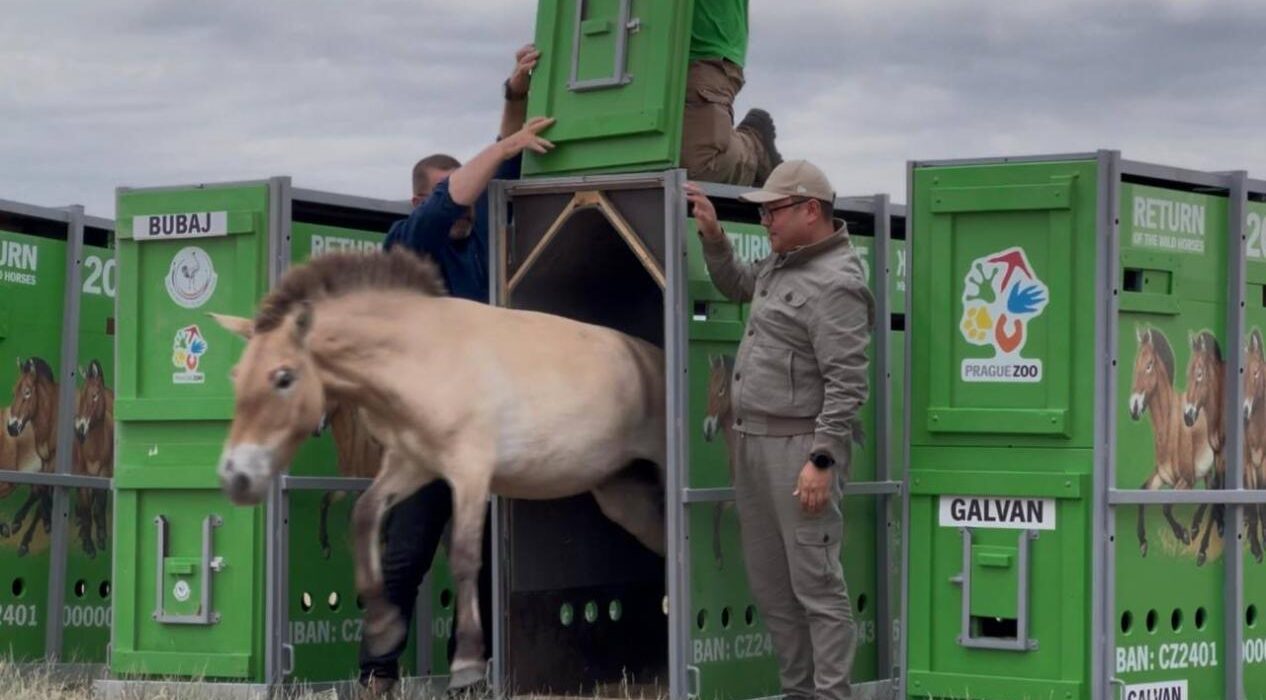A new group of Przewalski’s horses arrived in Kazakhstan on June 3, marking the second international transportation under the project of the reintroduction of this endangered species to the vast grasslands of Kazakhstan.
According to Kazakhstan’s Ministry of Ecology and Natural Resources, the horses were transported from Prague Zoo and Hungary’s Hortobagy National Park by two military planes of the Czech Republic and Hungary, with four horses on each plane.
The horses have been delivered to the reintroduction center in the Altyn Dala State Nature Reserve in the Kostanay region, where they will stay for a while in enclosures to get used to conditions in their new environment.
Daniyar Turgambayev, Chairman of the Forestry and Wildlife Committee of the Ministry of Ecology and Natural Resources, praised the results of the first year of the reintroduction project: “The second group of horses has been successfully transported, and the first group has successfully adapted and is ready for life in the wild under the protection of the Altyn Dala reserve,” he said.
“In cooperation with the Czech Air Force, Prague Zoo has organized the second transportation of Przewalski’s horses from Central Europe to Kazakhstan. Animals from European zoos will become the basis for the formation of a local population in the wild. We will continue this complex project until a viable and genetically diverse population is formed in Kazakhstan,” said Miroslav Bobek, director of Prague Zoo, which leads the reintroduction project.
Przewalski’s horse is the last genetically wild horse on Earth. The species vanished from the wild in the 1960s. But several European zoos kept some of the horses, saving the species from extinction, and reintroductions into the wild began in the 1990s, first in China and then in Mongolia.
The project to restore Przewalski’s horses in Kazakhstan began last year, with the first 7 horses arriving from the Prague Zoo in June 2024.
The animals successfully survived their first winter in the Kazakh steppe with frosts down to -30°C, adapted and underwent the necessary veterinary procedures. Two mares were fitted with GPS collars to track the group’s movements after release. By 2029, it is planned to bring in about 40-45 horses for their subsequent reproduction and the formation of a sustainable population.
Wild horses and kulans play a key role in the functioning of steppe ecosystems. By regulating the grass cover, they contribute to the formation of fertile soils. By reducing the biomass of vegetation, they help reduce the risk of steppe fires, and their manure and remains serve as a resource for many species of invertebrates. In winter, they make trails and clear snow, facilitating access to food and water for other species. They also provide food for predators and scavengers.
Photo: gov.kz




